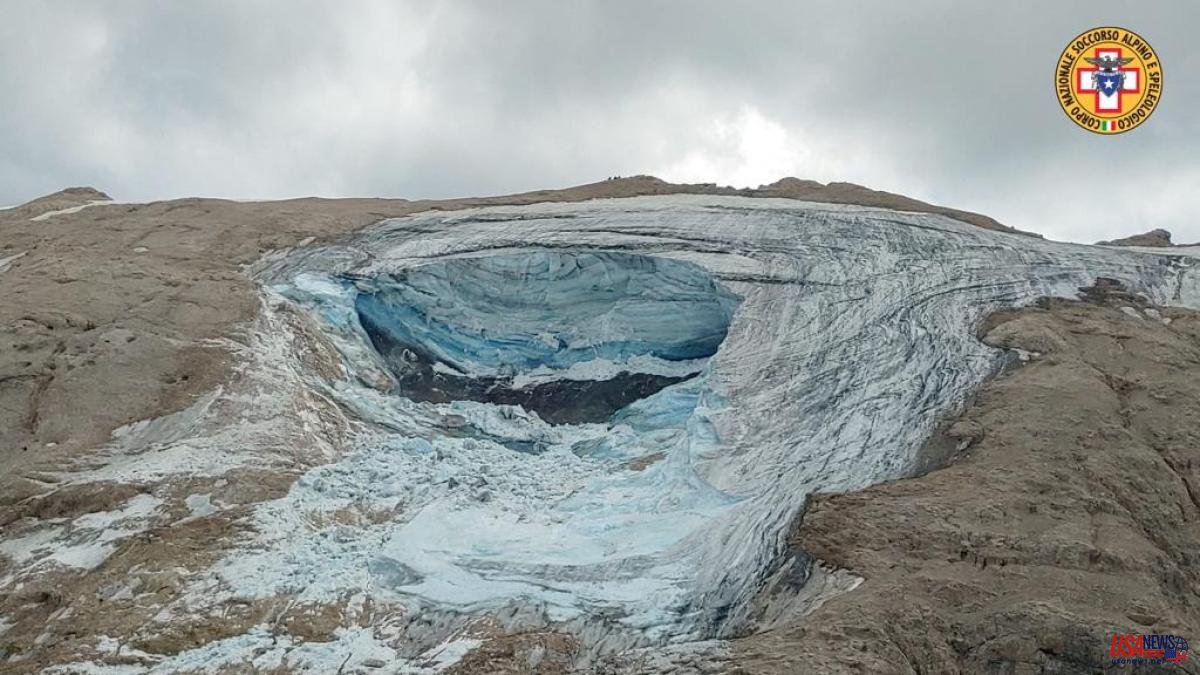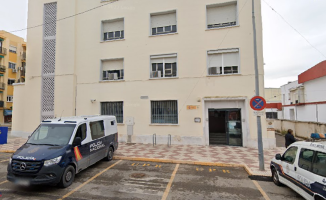Italy has been suffering from an extreme heat wave for many days. It has been baptized as Charon, after the ferryman from Hades, but nobody could have expected that its consequences would be so palpable. Until this Sunday, when six people have died and eight others have been injured after a part of the Marmolada ridge, the largest glacier in the Dolomites mountain range, the Italian Alps, broke off. It is feared that there are at least ten missing.
A mass of ice, snow and rocks has hit hikers who were spending a Sunday summer day on a very popular route in this area on the border between Veneto and Trentino. Although there were some roads closed, the landslide was so great that it has also agreed on the one that was open.
“We heard a loud noise, typical of a landslide, and then we saw a kind of avalanche made up of snow and ice go down at great speed. There I understood that something serious had happened. With the binoculars from here you can see the gap, it is possible that something still falls, "a person in charge of a nearby shelter told the Ansa agency. Witnesses have said that the piece of glacier split at two points. Then almost three hundred meters wide of ice and stones devastated everything they found in their path.
Soon the relief teams were launched to evacuate the area due to the danger of new landslides and to locate possible victims. Five helicopters were activated without delay to try to find any trace of other people trapped in the snow.
The first thing they did was check nearby parking lots to identify hikers through license plates and determine how many other people might have been there, a process that could take several hours. In addition to the several disappeared, eight people were found injured and were immediately hospitalized, two of them seriously.
The bodies of the victims that could be recovered from the snow were taken to the sports palace in the nearby town of Canazei. A team of psychologists was activated to accompany the relatives. This Sunday afternoon their ages or nationalities had not yet been made public. The Italian Prime Minister, Mario Draghi, expressed his sorrow for the victims "of the terrible landslide" at the peak of Marmolada and reported that he was in contact with the authorities in the area to follow all the news.
"It was something totally unimaginable," Michela Canova, spokesperson for Alpine Relief for the Veneto region, assured La Vanguardia. “But it was also unimaginable that temperatures would reach ten degrees this Saturday,” she pointed out.
Marmolada, at 3,300 meters, is an idyllic place due to its views over the rest of the alpine mountains. The segment that broke was near Punta Rocca, on the itinerary that is normally traveled to reach the top. Although the causes of the detachment must still be investigated, it is obvious that the high temperatures that have stalked Italy in recent days have something to do with it.
"The temperatures of these days have clearly been a factor," confirmed the president of the province of Trento, Maurizio Fugatti. As Canova repeated, ten degrees in this area of the country is something totally anomalous. A record. Extreme temperatures that have also contributed to the Po River, the largest in the country, experiencing its worst drought in 70 years. Much of Italy is starting to ask its citizens to consume as little water as possible. In Rome the level of the Tiber is so low that the ruins of the bridge built by Nero are once again visible.
Another spokesman for the relief teams, Walter Milan, pointed out that avalanches are always unpredictable and that there could be more factors to take into account. "But the effect of heat on the glacier is even more unpredictable," he stressed. According to a study by the Italian National Research Council published in 2019, the Marmolada peak will disappear in 25 to 30 years if temperatures continue to rise. Between 2004 and 2015 the glacier lost 30% of its volume and 22% of its extension. If in the past it was a single glacial mass, now it is "fragmented and divided", because the terrain is very irregular when the ice melts, the ice mass loses its uniformity, says the report.
The Marmolada peak is not the only Italian glacier in trouble. Another glacier that has lost a third of its volume in the last thirty years as a result of climate change is the Presena, also in the province of Trento. In recent years they have tried to avoid it by covering it with huge sheets that block the sun's rays. The Careser glacier, very close, has been monitored since 1967 and is believed to disappear by 2050. The Planpicieux glacier, 2,700 meters high on Mont Blanc, is also at risk of melting and threatening the valley at its foot. This is not on rock, like the rest of the endangered glaciers, but on a water surface, so the slide is faster and can be 1.5 meters in extreme situations.













